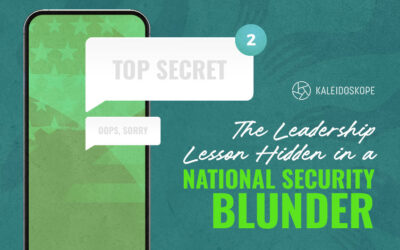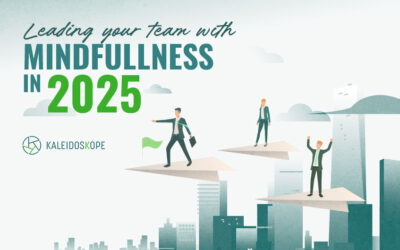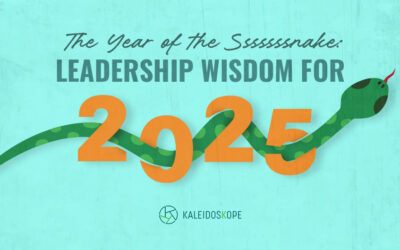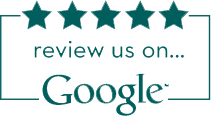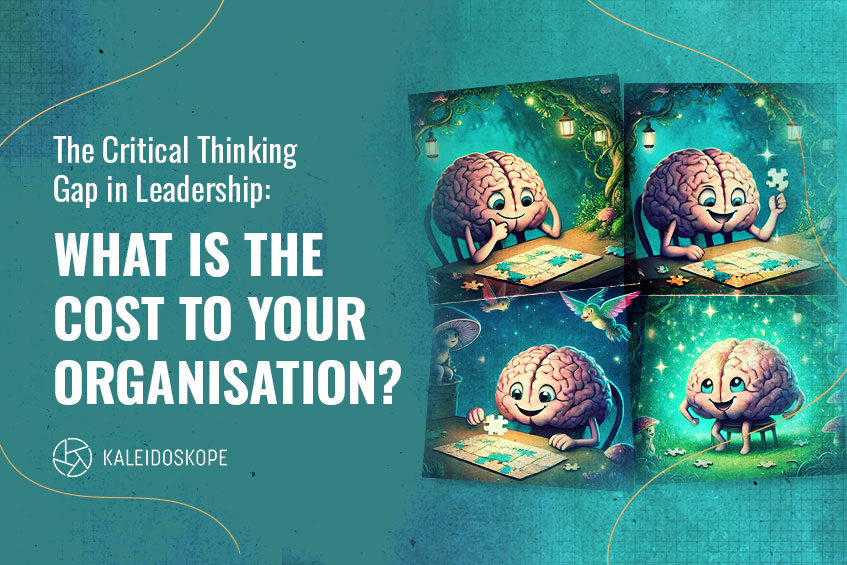
In today’s dynamic and intricate business landscape, the ability to think critically has become essential for effective leadership. At Kaleidoskope, we champion the RED Model of critical thinking, an indispensable framework that stands for:
- Recognize Assumptions
- Evaluate Arguments
- Draw Conclusions
This model equips leaders with the skills to navigate operational challenges, make smart decisions, and drive innovation within their organisations—a must-have tool for modern leaders.
Enhanced Decision-Making with RED
A comprehensive methodology such as the RED Model helps leaders gain a deeper understanding of the situation, enabling more effective and efficient decision-making by:
- R: Identifying and questioning underlying assumptions in any situation.
- E: Assessing the validity and relevance of information and arguments.
- D: Synthesising information to arrive at well-founded conclusions.
Using the RED Model, leaders are empowered to critically assess their assumptions; rigorously analyse the validity and relevance of the information on hand; and then synthesise this data to form well-supported conclusions.
This structured process minimises the likelihood of errors and biases that can arise from incomplete or one-sided viewpoints. Consequently, it leads to more effective strategies, better risk management, and improved outcomes for the organisation.
Problem-Solving Skills through RED
Leaders often face numerous challenges that require effective and quick problem-solving skills. The RED Model aids in this process by:
- R: Recognising the true nature of the problem by identifying assumptions.
- E: Analysing various perspectives and evidence from an objective viewpoint.
- D: Developing viable solutions based on well-founded conclusions.
The RED Model prompts your leaders to do a deep-dive into the matter and consider all pertinent factors, so they may devise strategies that are both robust and adaptable. Such a forward-thinking approach not only anticipates future challenges but also ensures the long-term stability and success of your organisation.
Overall, the RED Model enhances team dynamics by promoting a comprehensive grasp of issues, encouraging diverse viewpoints, and supporting collaborative decision-making. As such, teams become more cohesive, motivated, and high-performing.
Fostering Innovation with RED
Innovation thrives in environments where critical thinking is encouraged. The RED Model fosters an organisational mindset that is both analytic and agile by:
- R: Challenging existing assumptions to open up new possibilities.
- E: Critically analysing new ideas to ensure they are robust and feasible.
- D: Implementing new ideas and solutions that are well thought out and tested.
A critical thinking framework such as the RED Model inherently encourages continuous learning. By consistently evaluating and re-evaluating assumptions, arguments, and conclusions, it keeps teams engaged in a continuous cycle of learning and improvement.
Better Risk Management with RED
Effective risk management is crucial for any organisation, and it is in the interest of all its members to protect the company’s financial health. The RED R.E.D. Model supports leaders in this by:
- R: Identifying potential risks hidden in underlying assumptions.
- E: Evaluating the potential impact of risks based on solid evidence.
- D: Formulating strategies to mitigate identified risks.
The RED Model is a tool to help organisations become better prepared to handle uncertainties by enabling leaders to anticipate potential risks; conduct thorough risk assessments, develop robust mitigation strategies; enhance agility and adaptability; build organisational resilience; and promote a proactive mindset.
Improved Communication through RED
Effective communication is crucial for leadership success. The RED Model enhances this by:
- R: Understanding the assumptions behind messages and feedback.
- E: Assessing the clarity and logic of communications.
- D: Conveying messages that are clear, concise, and well-supported.
The RED Model enhances team alignment and collaboration by promoting a shared understanding, fostering inclusive discussions, and facilitating collaborative problem-solving. This method boosts trust and accountability among team members, ultimately strengthening team cohesion.
Conclusion
The RED Model of critical thinking is crucial for effective leadership, enhancing key areas like decision-making, problem-solving, and organisational resilience. Adopting this model helps leaders manage complexities and drive sustained success in today’s competitive business environment. We enjoin organisations to prioritise developing critical thinking skills to foster a culture of innovation and adaptability, ensuring stability and the ability to seize emerging opportunities.
Kaleidoscope recognises the importance of the RED Model in building strategic leaders for tomorrow. For more insights on leadership development and training programs designed to enhance critical thinking using The RED Model, visit our website or contact us at +65 9100 5995. Follow us on LinkedIn for the latest updates and expert advice on leadership excellence.
References:
Paul, R., & Elder, L. (2019). Critical Thinking: Tools for Taking Charge of Your Professional and Personal Life. Financial Times Press.
Facione, P. A. (2020). Critical Thinking: What It Is and Why It Counts. Insight Assessment.
Quick RED Model Assessment
INSTRUCTIONS
For each statement below, rate yourself on a scale of 1 to 5, where 1 = Strongly Disagree, 2 = Disagree, 3 = Neutral, 4 = Agree, and 5 = Strongly Agree.
★ Recognise Assumptions ★
- I regularly question the assumptions that underlie my beliefs and decisions.
- I seek to identify any hidden biases in the information I receive.
- I encourage my team to challenge the status quo and think critically about existing processes.
★ Evaluate Arguments ★
- I critically assess the credibility and relevance of information before making a decision.
- I consider multiple perspectives and sources of evidence when evaluating arguments.
- I encourage open discussion and debate to thoroughly evaluate all possible options.
★ Draw Conclusions ★
- I synthesise information from various sources to make well-informed decisions.
- I ensure that my conclusions are based on solid evidence and logical reasoning.
- I communicate my decisions clearly and provide the rationale behind them to my team.
SCORING
Add up your scores for each section to get a total for Recognise Assumptions, Evaluate Arguments, and Draw Conclusions.
- Recognise Assumptions (RA) Score:
- Evaluate Arguments (EA) Score:
- Draw Conclusions (DC) Score:
INTERPRETATION
RA Score:
9-12: You are effective at recognising assumptions.
6-8: You occasionally recognise assumptions but may miss some underlying biases.
3-5: You need to work on identifying assumptions in your decision-making process.
EA Score:
9-12: You excel at evaluating arguments and considering multiple perspectives.
6-8: You sometimes critically assess arguments but may benefit from a more rigorous approach.
3-5: You need to improve your ability to evaluate arguments and seek credible evidence.
DC Score:
9-12: You are proficient at drawing well-founded conclusions.
6-8: You occasionally draw strong conclusions but may need to strengthen your reasoning process.
3-5: You need to work on synthesising information and making evidence-based decisions.
Use this assessment to identify areas where you and your team can enhance your critical thinking skills using the RED Model. Regularly revisiting and reflecting on these statements can help maintain a high standard of critical thinking in your leadership practices.
Related Blogs
The Leadership Lesson Hidden in a National Security Blunder
We’ve all witnessed leadership failures in politics, business, and sports. A leader’s mistake and subsequent fallout reveal much about leadership, or the lack thereof. A recent incident involving the US Defence Secretary and other high-ranking officials is a stark warning, underscoring a critical gap within organisations that leadership training can bridge.
LEAD MINDFULLY: Your Self-Discovery Playbook
In the relentless currents of change of today’s business world,the traditional command-and-control leadership models are rapidly becoming relics of the past. Organisations navigating complex global markets and demanding innovation require something more – a leadership approach that is not just reactive, but deeply intentional and adaptive.
The Year of the Sssssssnake: Leadership Wisdom for 2025
In ancient Chinese culture, the snake is celebrated for its ability to navigate challenges with calm, focus, and determination. These very same qualities embody the intuition, transformation, and agility crucial for effective leadership in today’s dynamic world. As we enter the Year of the Snake, it’s an opportune time for leaders to reflect on the wisdom and strategic finesse associated with this revered Chinese Zodiac sign.
Start Your High-Performance Learning Journey
WITH KALEIDOSKOPE NOW!

